Integrating Power Apps with SharePoint for Document Management Solutions
One such combination of tools that can help companies manage documents and data better is Microsoft Power Apps and SharePoint. But what do these tools do? How do they help manage documents more effectively? Let’s explore how integrating Power Apps with SharePoint can create powerful solutions for document management.
What Are Power Apps?
Microsoft Power Apps lets organizations create specialized apps without coding. These apps work on smartphones, tablets, and PCs. They help businesses collect data, automate tasks, and make processes more efficient. Power Apps is part of the Microsoft Power Platform, which includes other tools like Power BI and Power Automate.
What Is SharePoint?
Businesses can store, organize, and exchange data online with Microsoft SharePoint. SharePoint manages documents, collaboration, and content. With SharePoint, teams can work together on documents, manage tasks, and create workflows to automate everyday tasks.
SharePoint stores documents in libraries, and users can upload, edit, or securely share these documents. It also allows businesses to set permissions and control who can access what.
Why Combine Power Apps with SharePoint?
Both Power Apps and SharePoint are powerful on their own. However, when combined, they create a solution for document management. SharePoint and Power Apps integration helps businesses in:
Develop Custom Document Management Apps
Power Apps lets you develop apps that are custom to your business needs. You can develop an app to manage your documents and link it to SharePoint for secure storage.
Automate Document Workflows
SharePoint allows you to create workflows that can automate tasks like document approvals, document routing, or notifying people when documents are ready for review. Power Apps helps to trigger these workflows from custom apps.
Enable Mobile Access to Documents
With Power Apps, businesses can develop mobile-friendly apps that give employees on-the-go access to documents stored in SharePoint. This means employees can check and manage documents even when they are away from the office.
Track Document Updates and Changes
With SharePoint’s version control and Power Apps’ customization features, businesses can track changes made to documents. This is particularly useful for teams that need to collaborate on documents and want to keep track of who made what changes.
Steps to Integrate Power Apps with SharePoint
Steps involved in making this integration Power Apps with SharePoint:
Step 1: Set Up SharePoint Document Libraries
The first step is to create a SharePoint Document Library where your documents will be stored. SharePoint allows you to create libraries where you can upload your documents and organize them into folders. When setting up your document library, you can decide who has access to the documents and set permissions for each user or group.
Step 2: Create a Power App
Develop a Power App that connects to the SharePoint Document Library. Power Apps provides a simple interface to create apps. You don’t need to know any coding to build these apps. Start from scratch or use templates.
When developing the app, you will connect it to your SharePoint Document Library by using the SharePoint Connector. This connector allows your Power App to access documents and other information stored in SharePoint.
Step 3: Add Document Management Features to Your Power App
Once you have created the app and connected it to SharePoint, you can start adding document management features. Features to consider include:
- Allow users to upload documents directly into SharePoint from within the app.
- Enable users to open and view documents stored in SharePoint and make edits if needed.
- If your business requires document approvals, you can create buttons in the app that trigger a document approval process in SharePoint.
- Add a search bar and filters to help users find documents easily.
Step 4: Automate Document Workflows with Power Automate
One of the best things about integrating Power Apps with SharePoint is that you can use Power Automate to automate workflows. Power Automate helps you create tasks that happen automatically when certain conditions are met. For example, when a new document is uploaded, you could set up an automatic workflow to:
- Notify team members that a new document has been uploaded.
- Trigger a document approval workflow where managers can review and approve or reject the document.
- Automatically route documents to the right person for review based on certain conditions.
Power Automate works seamlessly with Power Apps and SharePoint, making it easy to build workflows that save time and reduce manual tasks.
Step 5: Test and Launch the App
Once your Power App is ready and integrated with SharePoint, it’s time to test it. Testing is essential to ensure that the app works as expected and that users can easily upload, view, and manage documents.
You should also test the workflows to ensure that they are triggered properly. You can release the app to your team or organization after testing. Make sure to provide training and documentation to help users get the most out of the app.
Want to simplify document management? Integrate Power Apps with SharePoint with Ecleva’s expertise!
Use Cases for Power Apps and SharePoint Integration
Real-world cases where Power Apps with SharePoint integration can help businesses.
Human Resources Document Management
HR departments often have to manage many documents like employee contracts, payroll documents, and performance reviews. By using Power Apps with SharePoint, HR teams can easily upload, organize, and search for these documents in one place.
They can also set up workflows to automate document approvals and notifications when documents are updated.
Legal Document Management
Law firms and legal departments deal with large volumes of legal documents that need to be reviewed, signed, and stored securely. With Power Apps and SharePoint, they can create apps that allow legal teams to upload, search, and track the status of legal documents. Review and approval document routing can be automated using workflows.
Project Management Document Tracking
In project management, there are often many documents, such as project plans, reports, and contracts, that need to be stored and managed. By using Power Apps, project managers can develop a custom app to track the status of these documents, share them with team members, and set up approval workflows.
Healthcare Document Management
Healthcare organizations have strict requirements for storing patient records and medical documents. By integrating Power Apps with SharePoint, healthcare providers can create secure apps that allow staff to access patient information, upload medical documents, and track updates. Automation can route documents for evaluation or approval to the relevant departments.
Benefits of Integrating Power Apps with SharePoint
- You can create apps that are tailored to your specific business needs.
- SharePoint allows teams to collaborate on documents in real-time, while Power Apps makes it easier to manage and access them.
- Automating workflows helps businesses save time and reduce the chance of errors.
- SharePoint offers robust security features to keep your documents safe, and Power Apps can integrate with these security settings.
- Power Apps ensures that your document management solution is mobile-friendly, allowing teams to access documents anytime, anywhere.
Conclusion
Integrating Power Apps with SharePoint offers businesses a powerful solution for managing documents. By using Power Apps, companies can create custom applications that connect with SharePoint’s document libraries. This combination allows for seamless document management, efficient workflows, and increased collaboration.
If your business is looking to streamline document management, Power Apps and SharePoint integration is a great choice. Power Apps SharePoint Integration Company can help your business integrate Power Apps and SharePoint to improve document management.
For Power Apps Development Services, look no further than Ecleva. With their expertise in developing Custom Power Apps Solutions get Document Management System Development. By following these steps and using both the tools, you can upgrade your document management processes, save time, and improve collaboration across your organization.



